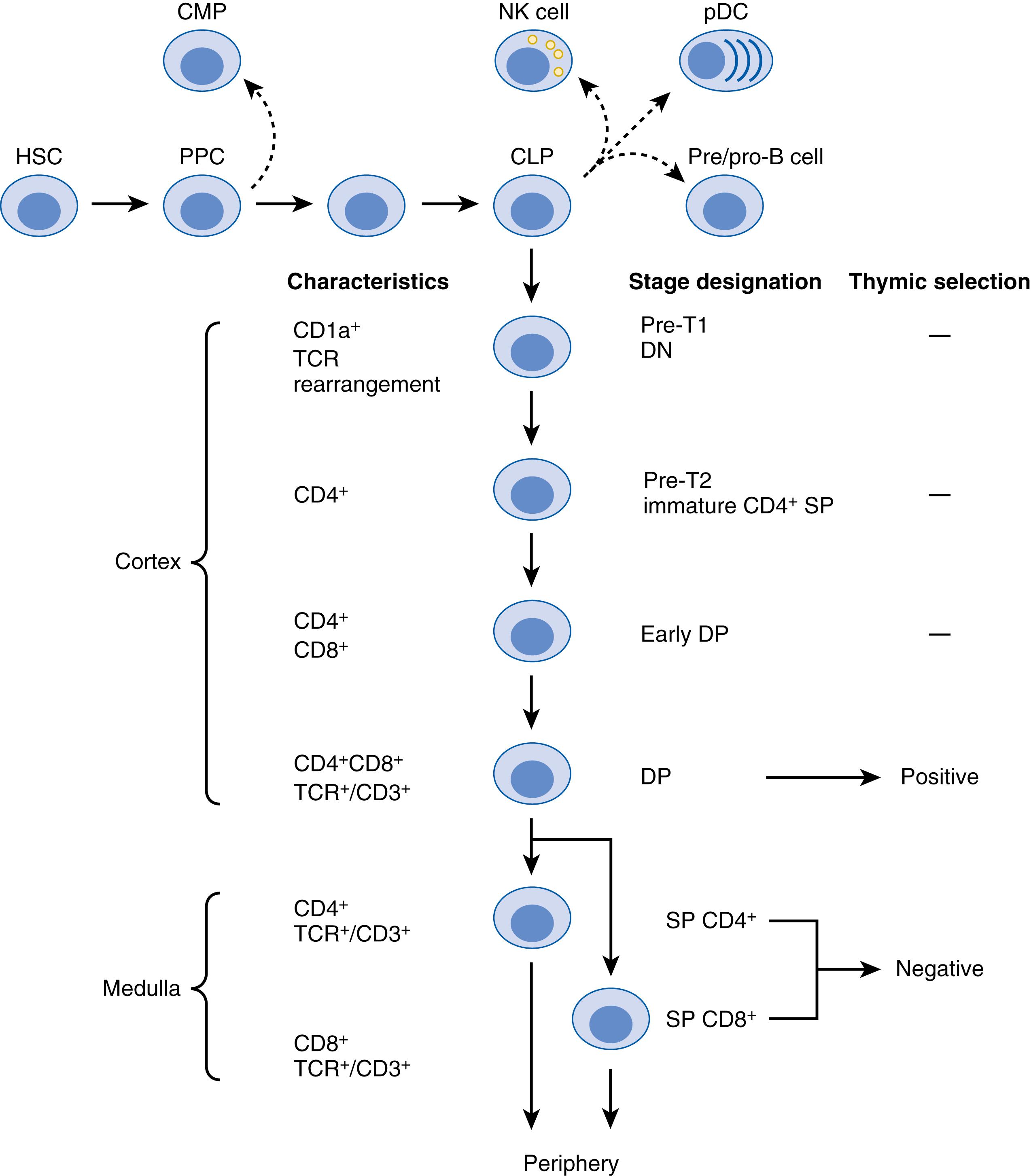Physical Address
304 North Cardinal St.
Dorchester Center, MA 02124
The authors wish to thank Marcia McDuffie, MD, Anthony R. Hayward, MD, PhD, and Luigi Notarangelo, MD, PhD, who contributed exceptionally to previous editions of this chapter in the third edition of Fetal and Neonatal Physiology .
Hematopoietic stem cells give rise to committed progenitors of multiple lineages. Whereas maturation along myeloid, erythroid, and megakaryocytic cell lineages occurs within the bone marrow, and differentiation into B lymphocytes initiates in the bone marrow and is completed in the periphery, T-lymphocyte development occurs within the thymus, where bone marrow–derived common lymphoid progenitors migrate. In particular, interaction of lymphoid progenitors with thymic stromal cells permits differentiation of CD4 − and CD8 − , double-negative cells into CD4 + and CD8 + , double-positive (DP) thymocytes within the thymus cortex. Subsequently, DP cells lose expression of either CD4 or CD8, becoming functionally active single-positive cells that populate the thymic medulla ( Fig. 116.1 ).

Although the thymus is particularly active early in life, it ensures lifelong generation of a pool of newly generated T cells. Of importance, the thymus also plays a critical role in purging self-reactive T lymphocytes. Therefore T cells produced in the thymus carry a seemingly unrestricted antigen receptor repertoire, whose reactivity is largely restricted to foreign antigens and is tolerant to self-antigens.
Become a Clinical Tree membership for Full access and enjoy Unlimited articles
If you are a member. Log in here